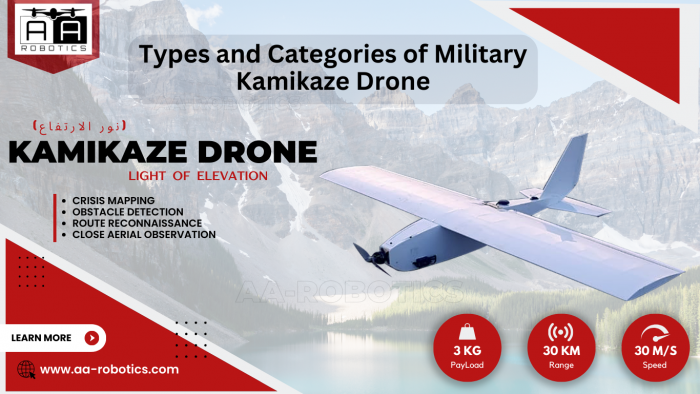In recent years, the need for effective and efficient border security has become increasingly critical. Countries worldwide face complex challenges in securing their borders from illegal crossings, smuggling, and other illicit activities. Traditional methods of border patrol, which often rely on human personnel and ground-based technology, have limitations in coverage, speed, and adaptability. However, the advent of advanced border security drones promises to revolutionize how nations protect their borders. This article explores the transformative impact of these cutting-edge drones on border security operations, highlighting their capabilities, benefits, challenges, and future prospects.
The Evolution of Border Security Technology
Historically, border security has relied heavily on human patrols, stationary surveillance systems, and physical barriers. While effective to some extent, these methods have significant drawbacks. Human patrols are labor-intensive and costly, with limited coverage and responsiveness. Surveillance systems, such as cameras and ground sensors, provide valuable data but are often stationary and can be easily circumvented by smugglers and other unauthorized entrants. Physical barriers, like walls and fences, are expensive to construct and maintain and can be breached.
The integration of technology in border security has evolved over the years, with advancements in surveillance equipment, data analytics, and communication systems. However, the introduction of drones represents a significant leap forward, offering unprecedented capabilities for monitoring, detection, and response.
Capabilities of Advanced Border Security Drones
Advanced border security drones, also known as Unmanned Aerial Vehicles (UAVs), are equipped with a range of sophisticated technologies that enhance their surveillance and reconnaissance capabilities. These drones come in various sizes and configurations, from small, portable units to larger, long-endurance models. Key capabilities include:
Aerial Surveillance: Drones can provide a bird’s-eye view of vast border areas, covering terrain that is difficult or impossible to access by ground patrols. High-resolution cameras and thermal imaging sensors allow drones to capture detailed images and detect heat signatures, even in low visibility conditions.
Real-time Monitoring: Equipped with advanced communication systems, drones can transmit live video feeds and data to command centers, enabling real-time monitoring and rapid decision-making. This capability is crucial for responding promptly to potential threats and incidents.
Autonomous Operations: Modern drones are capable of autonomous flight, following pre-programmed routes or dynamically adjusting their paths based on real-time data. This reduces the need for constant human intervention and allows for continuous surveillance over extended periods.
Multi-sensor Integration: Advanced drones can carry a variety of sensors, including radar, LIDAR, and chemical detectors. This multi-sensor approach enhances their ability to detect a wide range of threats, from unauthorized crossings to hazardous materials.
Data Analytics and AI: Drones can collect vast amounts of data, which can be analyzed using artificial intelligence and machine learning algorithms. This enables the identification of patterns and anomalies, improving the accuracy of threat detection and risk assessment.

Benefits of Border Security Drones
The deployment of advanced border security drones offers numerous benefits, making them a valuable asset for border patrol agencies. Some of the key advantages include:
Enhanced Coverage and Reach: Drones can cover extensive areas quickly and efficiently, providing surveillance of remote and rugged terrain that is difficult to patrol by foot or vehicle. This expands the reach of border security operations and reduces blind spots.
Cost-effectiveness: While the initial investment in drone technology can be significant, the long-term operational costs are often lower than traditional methods. Drones require fewer personnel to operate and maintain, and their ability to conduct continuous surveillance reduces the need for frequent human patrols.
Rapid Response: The real-time monitoring capabilities of drones enable border patrol agencies to respond swiftly to potential threats and incidents. This rapid response can be crucial in preventing illegal crossings, intercepting smugglers, and mitigating other security risks.
Safety and Risk Reduction: Drones can be deployed in hazardous or hostile environments, reducing the risk to human personnel. This is particularly important in areas with harsh weather conditions, difficult terrain, or high levels of criminal activity.
Scalability and Flexibility: Drones can be easily scaled to meet changing operational needs. Additional units can be deployed during periods of heightened activity or in response to specific threats. Their flexibility allows for quick redeployment to different areas as needed.
Challenges and Considerations
While the benefits of advanced border security drones are significant, their deployment is not without challenges. Addressing these challenges is crucial to ensure the effective and sustainable use of drone technology in border security operations.
Regulatory and Legal Issues: The use of drones for border security raises legal and regulatory questions, particularly regarding privacy and airspace management. Clear guidelines and policies are needed to ensure compliance with national and international laws.
Technical Limitations: Drones are subject to technical limitations, such as battery life, range, and payload capacity. Advances in battery technology and lightweight materials are needed to extend the operational capabilities of drones.
Cybersecurity Risks: As with any connected technology, drones are vulnerable to cyberattacks. Robust cybersecurity measures are essential to protect drones from hacking, data breaches, and other cyber threats.
Environmental Factors: Weather conditions, such as high winds, rain, and extreme temperatures, can impact the performance of drones. Ensuring the reliability and resilience of drones in various environmental conditions is a key consideration.
Public Perception and Acceptance: The use of drones for surveillance can raise concerns about privacy and civil liberties. Transparent communication and engagement with the public are important to address these concerns and build trust.
Future Prospects and Innovations
The future of border security drones is promising, with ongoing innovations and advancements poised to further enhance their capabilities. Some of the key trends and developments to watch include:
Improved Autonomy and AI Integration: Advances in artificial intelligence and machine
learning will enable drones to operate more autonomously, with enhanced capabilities for threat detection, decision-making, and adaptive responses.
Extended Endurance and Range: Research into new battery technologies, such as solid-state batteries and hydrogen fuel cells, aims to increase the flight endurance and range of drones, allowing for longer and more extensive patrol missions.
Swarm Technology: The development of drone swarms, where multiple drones operate collaboratively, has the potential to revolutionize border security. Swarm technology can provide more comprehensive coverage, faster data collection, and enhanced resilience.
Hybrid and Multi-modal Drones: The integration of different propulsion systems, such as fixed-wing and rotary-wing configurations, can enhance the versatility and performance of drones. Hybrid drones can offer the advantages of both vertical takeoff and landing (VTOL) and long-endurance flight.
Advanced Sensors and Data Fusion: The continuous improvement of sensors and data fusion techniques will enhance the ability of drones to detect and classify a wide range of threats. This includes the integration of hyperspectral imaging, acoustic sensors, and advanced radar systems.
Conclusion
The deployment of advanced border security drones represents a transformative shift in how nations protect their borders. These cutting-edge UAVs offer unparalleled capabilities for surveillance, monitoring, and response, enhancing the effectiveness and efficiency of border security operations. While challenges remain, ongoing innovations and advancements hold the promise of even greater capabilities in the future.
As countries continue to face complex and evolving border security threats, the adoption of drone technology will play a crucial role in safeguarding national sovereignty and security. By leveraging the unique advantages of advanced border security drones, nations can enhance their ability to detect and respond to threats, protect their borders, and ensure the safety and security of their citizens.
















